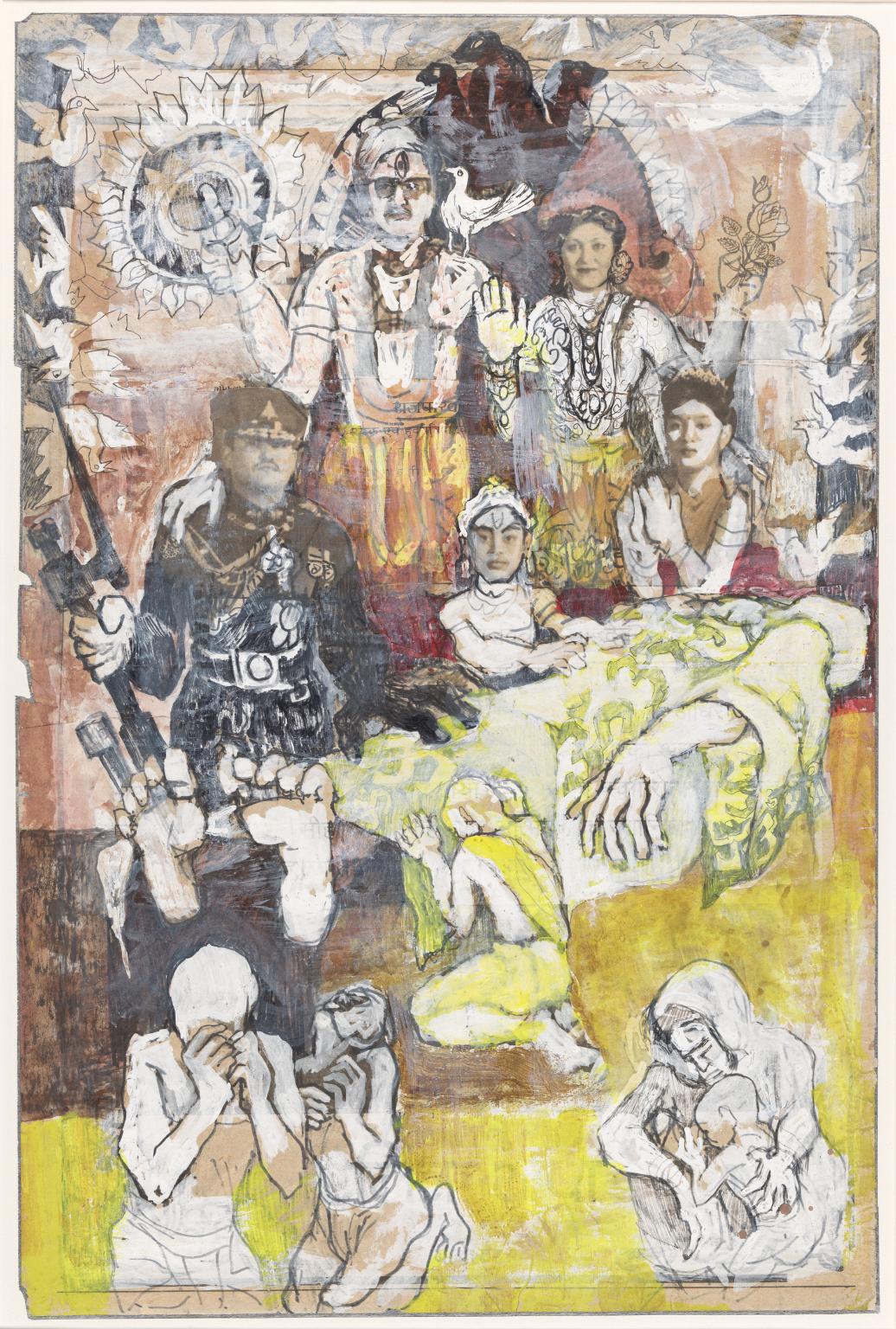Explore an artist who was central to debates about art and politics in Latin America and question what newspapers tell us about society and politics
'Art is not beauty or novelty, art is effectiveness and disruption', Ferrari wrote. Throughout his career he used his art to draw attention to state-sponsored crimes and censorship. He often criticised the Argentine government and the Catholic Church for their human rights abuses. In 1976, a right-wing military dictatorship seized power in Argentina. Due to his political stance, Ferrari and his family were forced to flee to Brazil. His son, Ariel, was one of the many citizens abducted by the military. His whereabouts remain unknown and he is presumed to be dead.
While in exile, Ferrari began to explore ways to distribute his art more widely. His methods included photocopying, heliography (an early method of photographic printing) and the internet. The works in this room are based on newspaper and magazine extracts. Ferrari would cut them out, sometimes add his own drawings or collage, and photocopy them. Ferrari's reworking of religious imagery led to controversy. In 2004, Pope Francis—then Archbishop of Buenos Aires—called his art blasphemous. He demanded that an exhibition of Ferrari's work should be closed. 'It isn't anti-religious art', Ferrari responded, 'but an art that is against repression and against torture, whether it is religious or not.
Tate Modern
Natalie Bell Building Level 4 East
Room 3
16 November 2020 – 7 July 2024
Art in this room
Sorry, no image available

Sorry, no image available
Sorry, no image available
Sorry, no image available
Sorry, no image available
Sorry, no image available
Sorry, no image available

